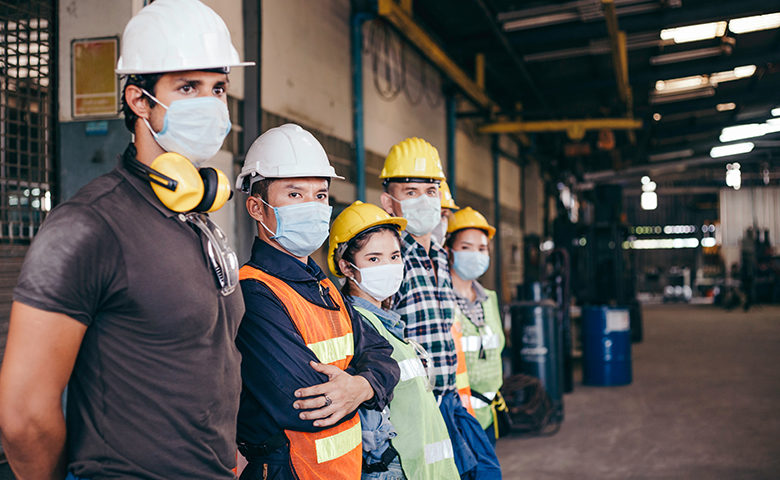This is a guest post by Jori Hamilton.
Every day, millions of Americans go to work, fully expecting that they will return home at the end of the day in one piece. Recent studies show that 85% of Americans view safety as their number one job priority. Every business should have the same expectations as a healthy workforce is a happier and more efficient workforce.
Safety has to be the priority from day one, and to lay the groundwork, your company must have a well-constructed new hire orientation where safety managers and supervisors provide thorough safety education to all new hires in a way that is easy to understand and implement. This training should be part of the instruction for all new employees on the first day. While mandatory training for basic job functions should be a given (e.g., everyone who will be driving a forklift must be trained on how to use these vehicles), a lot more than functional training should go into your safety orientation. Let’s take a look at what that should include.
Explain your commitment to safety
The first thing you need to cover is your company’s view on safety and how it should be a part of every workday. Encourage plant and operations managers to provide examples of current initiatives and expectations. Many companies emphasize the point by including a safety component as a part of the employee’s performance review, so they know that the future of their position depends on being safe.
You want to put this commitment to safety in writing and provide employees with all the documentation they need. It’s often helpful to provide this information electronically and place it in an online portal so anyone can access the documents when necessary. In addition to safety checklists and signed forms, provide injury and illness data related to their specific position.
Next, take the group on a tour of the facility as you show the location of all departments and areas where they are allowed and where they aren’t. Take the time to carefully point out every first aid kit, fire extinguisher, and exit door. You can also have a conversation about common hazards and situations that have elevated levels of risk. At the end, allow time for questions and leave no voice unheard.
Reporting hazards before they happen
The best way to avoid workplace accidents is to be proactive and prevent a mishap from occurring in the first place. Managers need to inform employees that anything from an unsteady stack of boxes to a coworker who looks physically ill is a cause for concern, and should be reported immediately. To encourage this, management should expressly explain that they have an open-door policy when it comes to reporting.
Inform new employees of the best way to report hazards and the chain of command to contact if their immediate manager is not available. Tell them that reporting unsafe behavior will never be frowned upon, and it is considered a part of their job responsibilities. For new employees to understand the importance of safety, managers must lead by example and be vocal about taking near-miss and hazard reports seriously.
Go into detail about the signage placed around the workplace and what it represents. For the most treacherous areas, your organization should have danger signs with a red background with white text along with yellow caution signs for slippery areas or places where safety equipment like goggles and helmets are required. Take the time to describe these signs so new employees can anticipate how to act when near them.
What to do with injuries
Safety officers need to explain processes effectively, so if an unfortunate incident does occur, employees know next steps and options for recovery. This discussion should include an overview of worker’s compensation and the process that occurs if an employee needs to use it. Train them about providing a summary of the injury in writing and the claims process and what to expect if the claim is accepted or denied.
Next, bring in a representative from the human resources team to inform them of the benefits that their health insurance and workers’ compensation can provide depending on the severity of the injury. This might include the need for an occupational therapist who will help the worker recover through physical therapy and strength training. Also, explain the leave of absence procedures and the paperwork required if they are unable to perform their job responsibilities.
A section of the orientation should also be directed towards COVID-19 and how to protect against it. Remind them of the importance of washing hands and wearing masks when necessary. If they feel sick, advise them to inform a manager so they can be escorted to a safe place or home to see a doctor.
Taking these measures will show employees that you care for their well-being, from wanting to prevent incidents from occurring to being willing to help them recover if they’re injured.
Educate new hires about staying safe at work, and you will have a more productive and safety-conscious staff.
Jori Hamilton is an experienced writer residing in the northwestern U.S. She covers a wide range of topics but takes a particular interest in covering topics related to workplace safety, employee training, and business productivity. To learn more about Jori, you can follow her on Twitter and LinkedIn.

